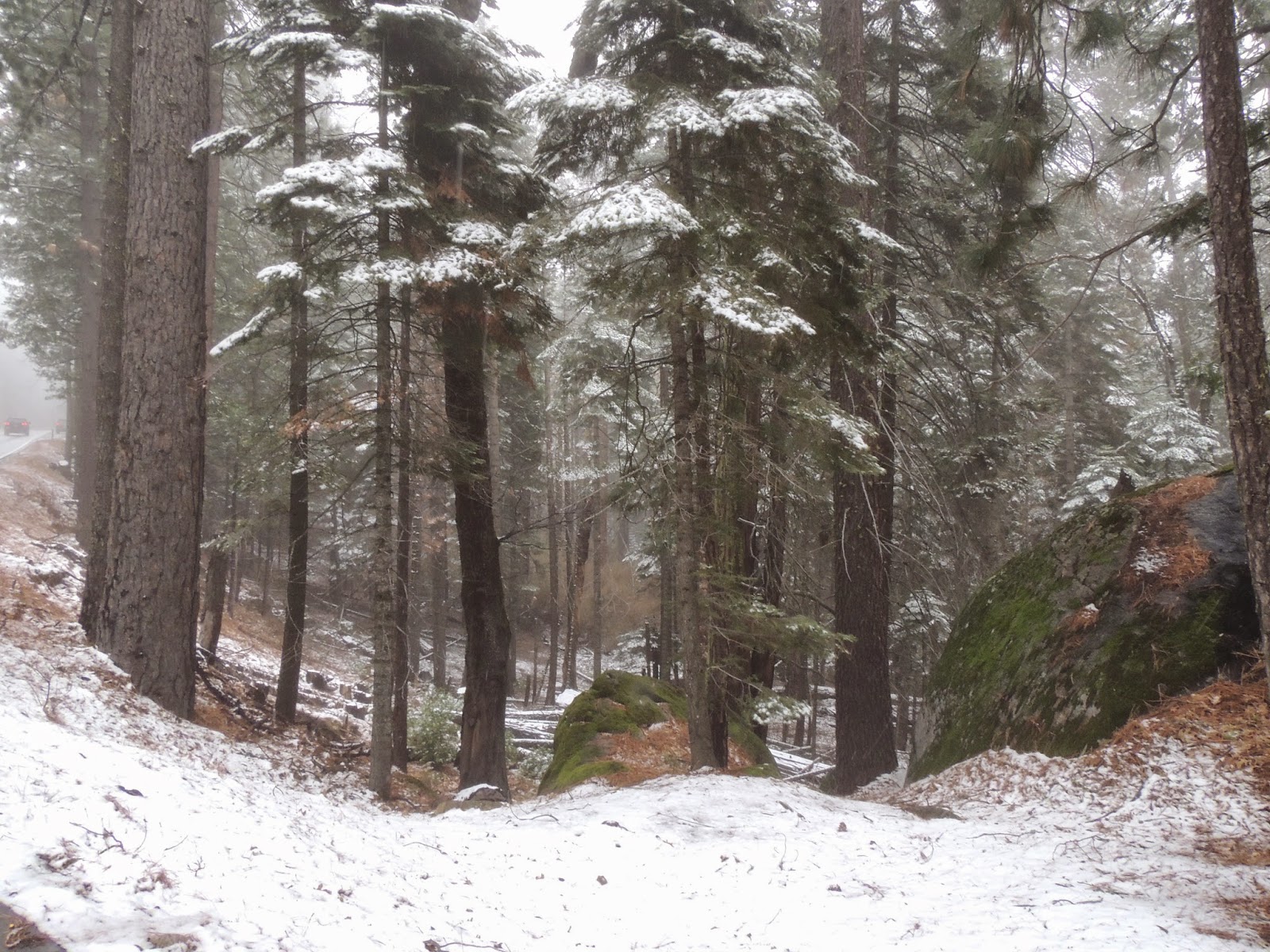We know that the east entrance to Yosemite is closed because of snow. That means we will have to circle around and come in the west. This calls for the road atlas so that I can find a town and a hotel.
I settle on a lil' place called Mariposa, California. When we get there we're thrilled to discover it is an unblemished old mountain mining town, and our hotel is hangin' off the side of the mountain! I don't usually promote the places we stay, but this one has something special to offer. Comfort Inn has two separate housing units with a kitchen and a living room! It would be amazing for a family reunion!
The history of Mariposa and Mariposa County is pretty interesting. Check out this website if you're interested in gold and California in the 1800's.
http://www.visitmariposa.net/history.html
But we're interest in Yosemite. It's cold, and snow is forecast for the Park. Granpa bought snow chains for the tires, so he is obviously determined to go. As for me, I packed every conceivably warm clothing item available - and bought extras! (Turns out they were absolutely needed!)
This entrance to Yosemite is NOT RV friendly.
The forecast of precipitation made for
incredible photos! They were so good that when we got back to the hotel that first night Granpa ordered a giant print on canvas to hang in our great room back home! I think this is the one he chose:
Check out that waterfall!
It certainly doesn't look real does it? None of the photos look like something an ordinary person would see much less get an astonishing photo of. No wonder the Park is full of artists of every kind trying with each brush stroke to become one with the Park. "Nowhere else on earth are there so many spectacular waterfalls in such a concentrated area."
Then, in a solid mass of clouds, wa-a-a-y up high I see something that makes me think that heaven itself is looking down on us.
I know, I know. It's one of those, "you had to be there" kinda things. But this was so isolated and so ethereal. It was literally breathtaking for both Granpa and I. We couldn't see landforms of any kind because of the clouds - just the trees looking down on us from heaven!
It takes us forever to get as far as the Visitor's Center because every second the clouds were changing and Granpa would have to stop and take a picture - which was totally fine by me!
The Visitor's Center is in Yosemite Village. They call it a village because there's a lot more than just the Center. There
has to be because millions of people a year come here. However, this is winter time and there are only a handful of people in the whole park. (My kinda visiting!) Granted, the higher elevation roads are closed because of snow, and it's mighty cold and wet for hiking, but there is so much to see and do anyway... not to mention the fact that by August the ephemeral falls disappear and the others dwindle to a mere trickle.
The Center of course has a mini museum explaining the geology, history and fauna (all the animal life of the region.) This I particularly like - a bird walking around under water!
The whole place was amazing...
If you went to that link I shared above then you already know that Yosemite was discovered by a troop of militia that was chasing Indians. They followed them into this enormous box canyon. This is an "eagle eye" view of the glacier-carved gorge. The red lines are the roads that we traveled through here.
One must not miss the details either, the "can't see the forest for the trees" kinda things.
That tree is huggin' that rock like an octopus, totally determined not to be washed away in a Spring flood!
.JPG)
.JPG)






.JPG)

.JPG)












.JPG)



.JPG)

.JPG)




.JPG)

.JPG)

.JPG)





.JPG)





